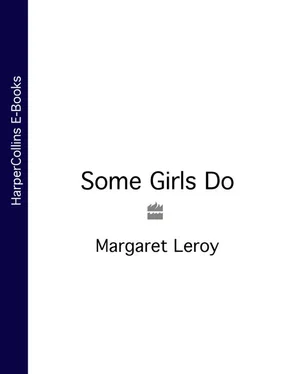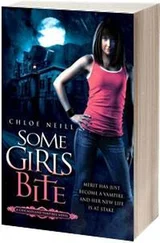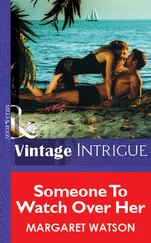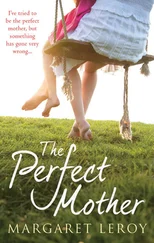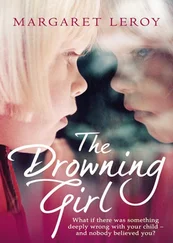One of the most widely found folk or fairytale themes is the ‘animal groom’, in which a woman is married to an animal or monster. Here a kiss or act of love initiated by a woman effects a magical metamorphosis. In ‘Hans My Hedgehog’, ‘The Frog Prince’ and ‘Beauty and the Beast’, the heroine kisses or shares her bed with some physically unprepossessing creature, often in response to a request from her father – perhaps in order to set her father free, or to fulfil a pledge made by him. She does it with a sense of repulsion but is pleasantly surprised how it all turns out: the frog becomes a prince and the beast beautiful.
Psychoanalyst Bruno Bettelheim reads a deeper meaning into these stories. For Bettelheim, the animal represents children’s feelings about adult sexuality and adult genitals – the frog, which blows itself out when excited, is a particularly vivid symbol – and the transformation of frog, hedgehog or beast into prince is a metaphor for a psychosexual transformation that must be accomplished if sexual maturity is to be achieved. The story shows that, in order to enjoy sex, ‘the female has to overcome her view of sex as loathsome and animal-like’, so that what was once repellent becomes desirable. 5 In the story, the woman – usually a pubescent girl – initiates without any hope or expectation of pleasure, and has a delightful surprise. Here is one female initiative that has a happy ending – though it wasn’t embarked on with that intent and the woman’s motives are purely altruistic.
Feminist writer Robin Norwood, in her self-help book, Women Who Love Too Much , has a different take on these stories. 6 She sees them as terribly misleading lessons for women, with their implicit promise that women can save and reform unlovely men through the power of their sexual love. She suggests that whenever a woman says, ‘I thought I could save him’, she’s been taken in by the patriarchal propaganda that urges us to love addicted or disturbed or needy men – that urges Beauty to ‘stand by’ the Beast. Intriguingly, the suspicion that there’s some dreadful patriarchal kernel to these stories seems to be shared by today’s canny little girls, who find stories like ‘The Frog Prince’ unacceptably wimpish and favour the Babette Cole version in which the princess’s kiss works the other way round, and the unappealing prince that the princess doesn’t want to marry is turned into a frog.
Here then is our first category of initiating women. These sexual initiatives are purposeful and direct, but the motive has nothing to do with the woman’s own pleasure: she is doing her job, serving her country, setting her father free, exposing a man’s weakness, saving someone, doing her bit for the Russian industrial complex. And, except in the fairytale where her move breaks the spell that bound him or kept him beastly, the men who succumb to the women’s advances come to regret it; they find themselves recruited as spies, in prison, blackmailed, rejected by their women, or made a laughing stock.
BAD WOMEN: Watering the tree of strife
Njal’s Saga is a labyrinthine Icelandic epic that dates from the thirteenth century. It tells the story of Njal and Gunnar and Gunnar’s wife, Hallgerd. As Hallgerd grows into womanhood, she becomes very lovely, with long legs and long silken hair that veils her body and, at first, only Hrut her uncle sees through her: ‘The child is beautiful enough,’ he says, ‘and many will suffer for her beauty; but I cannot imagine how thief’s eyes have come into our kin.’ 7
Hallgerd exemplifies a peculiarly female form of wickedness; she acts covertly, she’s a stirrer. A whispered word from Hallgerd, and storehouses go up in flames, minor slights are brutally avenged, and men come home with their axes covered in blood. Her sexual power, that has men falling over themselves to do what she wants, is part of a wider pattern of wickedness: she ‘waters the tree of strife’. The bad sexual woman goes back a long way.
Fairytales are a particularly rich source of bad sexual women. Feminist commentators on fairytales have noted that the powerful instigating women in the stories we know best are without exception wicked. In Perrault or Grimm, good women are passive, sometimes so passive they’re fast asleep or comatose in glass coffins. The women who get things going are always bad.
For today’s children, these vibrant and alarming presences are most vividly evoked by Disney films. Who are the truly terrifying characters in the Disney films we saw as children – and which today’s children watch so avidly? Marina Warner comments that children find the masculine beasts in fairytales thrilling rather than scary – and certainly children above about three can be rather fond of the Beast in Disney’s Beauty and the Beast , with his shaggy mane, lolloping gait and poignant air of self-pity. But the wicked women in Disney are something else. Some are directly based on fairytale, others are more recently invented but have fairytale resonances – and all of them send small children scuttling behind the sofa. In The Sleeping Beauty there’s the Wicked Fairy, and in 101 Dalmatians Cruella de Vil, who steals puppies to make into fur coats. The Rescuers has Medusa, who sends little Penny down a mine shaft in a bucket to hunt for a diamond. And in Disney’s first film, Snow White , there’s the Wicked Queen, whose baroque savagery makes her the most alarming of all Disney’s creations.
These women are the very embodiment of that ‘return to glamour’ which fashion journalists periodically attempt to foist on the reluctant woman in the street. They dress as vamps. They wear black and red, the sexual colours. Cruella de Vil and Medusa have spiky heels and spaghetti-thin shoulder straps, and the medieval-style villainesses have blood-red lips and fingernails and far too much mascara. For these women, desirability is everything; their aim above all is to go on looking good. This is why they send little girls down mines to look for jewels, or demand that the hearts of pretty teenagers be brought to them in caskets, or trap loveable puppies to turn into fur coats, or put nubile princesses out of the competition for a hundred years. These projects derive their urgency from the fact that these women are ageing and can’t bear it; they seek to hang on to their central role on the sexual stage at a time in the life-cycle when they should be handing over to a younger, more innocent generation. In seeking to present themselves as sexual women when they should be mothers, they go against the natural order. Their concern with appearance is also a sadistic agenda – in that the feelings, safety and even lives of others are sacrificed to the women’s superficial pleasures.
One of the perennially puzzling questions about women who do take sexual initiatives for their own pleasure is why, in our books and films and stories, they are always always bad. Part of the answer may lie here, with Cruella de Vil or the Wicked Queen – in the fact that some of the wickedest sexual women are in stories for children.
The wickedness of the Disney villainesses is very specific. It’s about being horrid to the weakest and most appealing creatures – small cuddly animals and the nicest little girls. It’s about competing sexually with the Princess when you’re old enough to be Queen Mother. It’s the precise opposite of mothering. For the child, this absence of mothering behaviour is the very essence of female badness. And the story makes clear that it’s the woman’s sexuality that drives her to behave in this unnatural way. So from the child’s viewpoint, there’s a profound opposition between nurturant and sexual behaviour in his or her mother.
Freud devoted much attention to children’s horror of the primal scene – the sight of their parents having intercourse. In PsychoDarwinism , Christopher Badcock puts forward a plausible sociobiological explanation for this. 8 He argues that the child doesn’t want her parents to have sex because she doesn’t want them to reproduce anymore. Another brother or sister takes something away from her: she wants to keep everything for herself – the breast milk, the food, the parental care. And because it’s the mother who provides most of the nurturing, it’s the mother’s sexuality rather than the father’s that is particularly problematic for the child. A father can spread his seed around without taking anything away from his own offspring – but a mother’s sex drive inevitably pulls her away from her child.
Читать дальше
